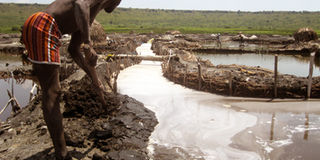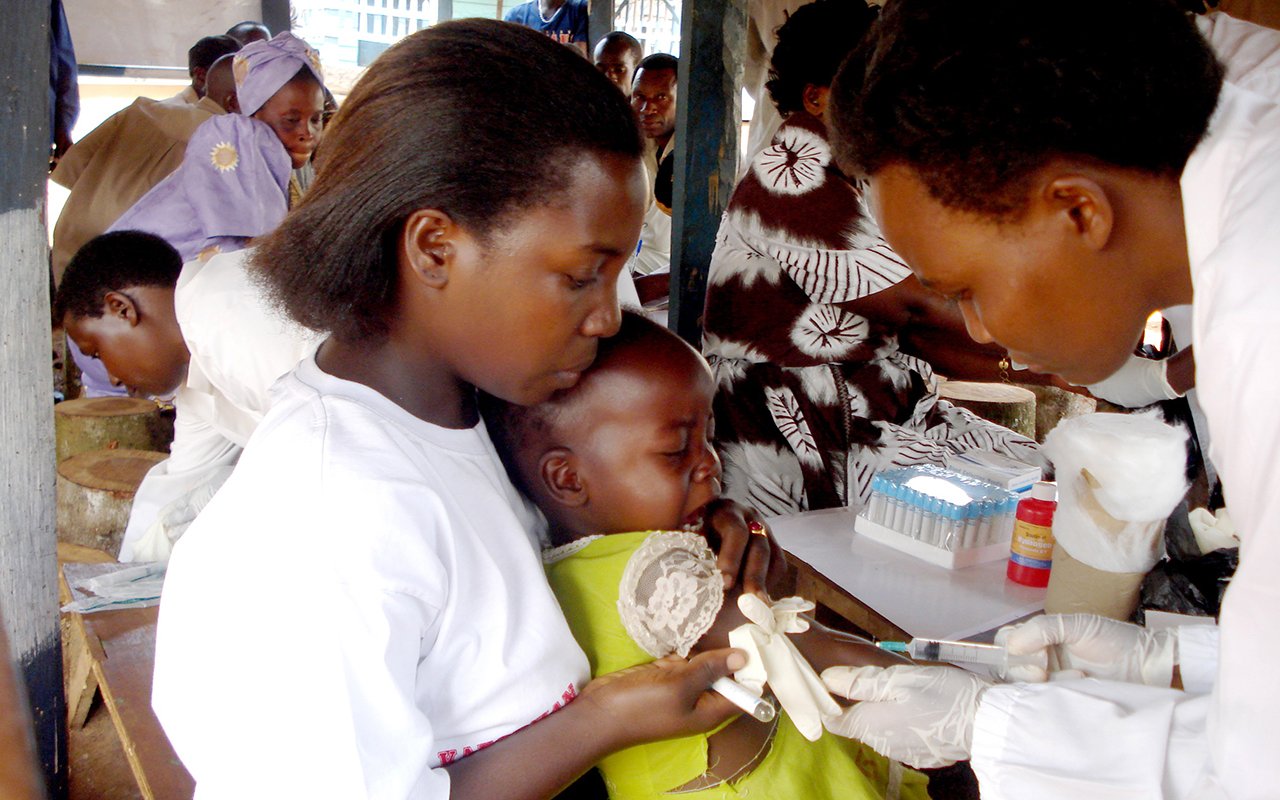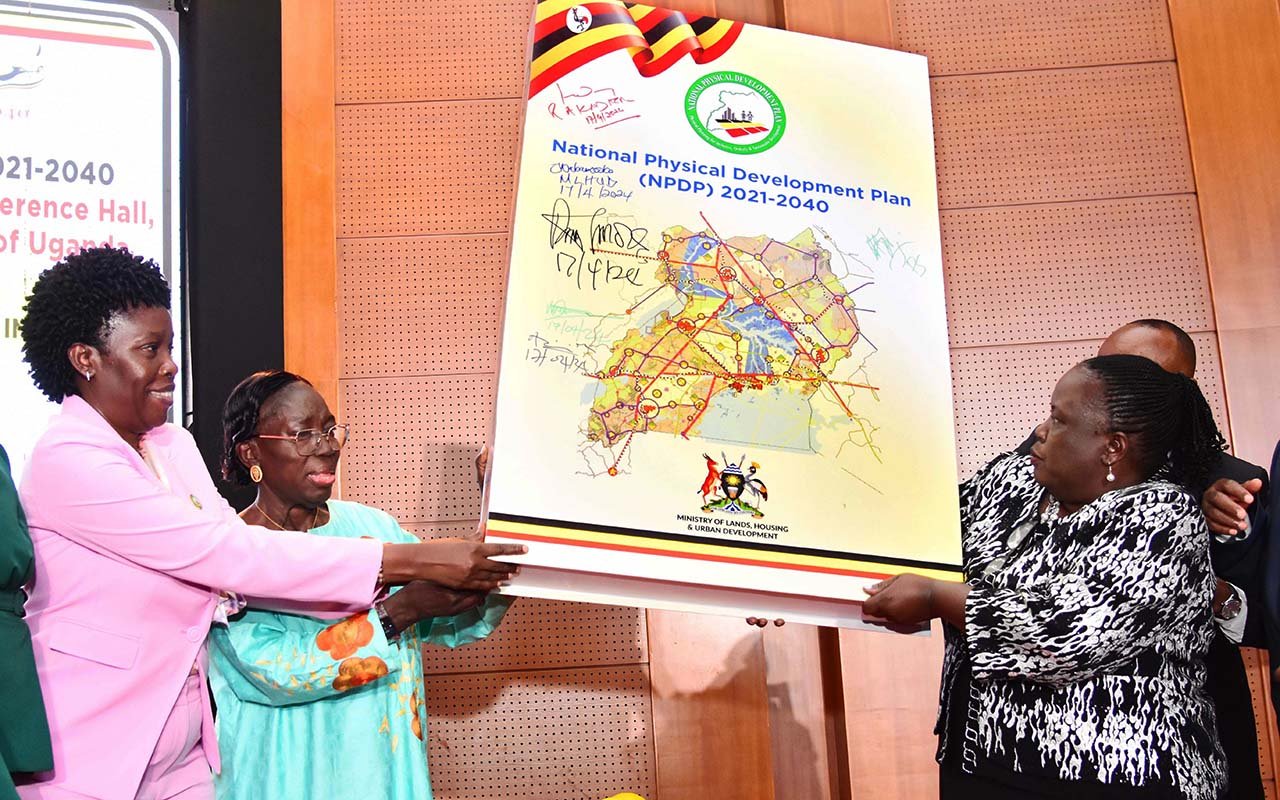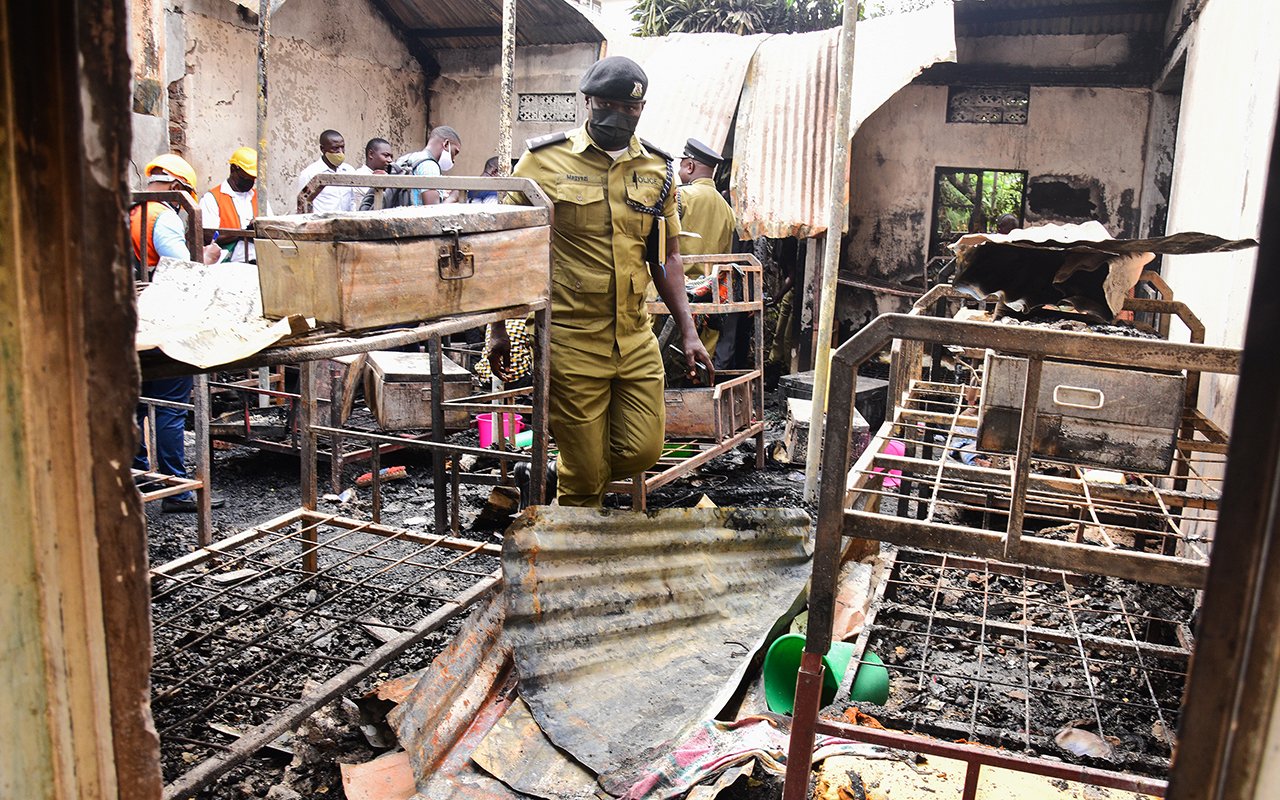KATWE: The salt mining lake

Constantino Mbusa repairs the boundary of his pan. PHOTO BY Abdulaziz K. Tumusiime
What you need to know:
The locals owe their livelihood to this lake and yet it poses a great health risk to their lives.
Lake Katwe is about 550 kilometres west of Kampala, in Kasese District, Kabatoro/Katwe Town Council. It is one of about 52 explosion crater lakes found in Queen Elizabeth national park.
The salt mining lake is the chief producer of salt in Uganda. It was formed as a result of volcanic eruption about 10,000 years ago. The lake is about 9km wide and the deepest point is six feet. There is a raised settlement near the lake which people who came from neighbouring areas to buy salt called “aha katwe”. It is from this that the name Katwe was derived.
It is uniquely partitioned into various “plots” called salt pans. The pans are square like, measuring nine feet wide and two metres deep. They are dug using hoes and demarcated using earth and pieces of wood. According to Richardson Ouma, an employee at Katwe Tourism Information Centre, the lake has more than 1,000 salt pans though only 800 are registered by Katwe Town Council. Ouma says some salt pans have existed since the 14th century. There are locals who own as many as 10 to 20 pans.
Cost of the salt pans
It is on rare occasions that one sells one’s pan, but in such transactions, the price ranges from Shs800,000 to Shs2m depending on its size. Most of the pans are inherited. In an effort to conserve the lake, no more salt pans are allowed to be dug up. At the shoreline of the lake, grows a salt-tolerant plant specie called Cyperus Lievitigetus.
It helps in conserving the lake by filtering impurities, such as sediments, from the blowing wind, and rain water, running from the surrounding hills. The grass helps to control the rate at which the impurities get into the lake. Those who cut it use it for making mats.
There are two salt mining activities at the lake: rock salt activity and salt winning. Rock salt activity is done in the main lake by only men whereas salt winning is carried out in the salt pans by both sexes. The salt in the pans forms by a process called fractional crystallisation. The formed salt crystals are scrapped from the bottom of the pan using a curved iron sheet locally called Akabaati. This activity is only carried out during the dry season. This salt is ready for consumption. Its difference from the packed salt we buy from shops is that it has bigger crystals and is low on iodine. 100kgs of this salt goes for Shs40,000.
Rock activity is carried out in the main lake. Beneath the lake, is a “mother rock” of sodium chloride. This type of salt is locally called mahonde or ekisula . It forms at the bottom of the main lake by a process called cementation. The major markets for this salt are Rwanda and Congo. This salt acts as a catalyst in boiling dry beans, preserves hides and skins and enhances milk production when licked by cows. It is also used in dyeing clothes and facilitation of a process called saponification in soap making. 100kgs of rock salt is sold at Shs20,000.
The lake is also a source of a black mud called Trona which is on high demand in Kenya. It is converted into fertiliser and also used in making glass. salt mining, however, has some adverse effects on people’s health and the environment. Constatino Mbusa, who has been working at the mines for the last 10 years, says that salt mining poses a lot of health risks but it is the urge to earn a living that keeps him going.
“When the water enters our reproductive parts, it makes them itchy. Instinctively, you respond by scratching yourself for relief. When you scratch, a small wound develops which widens overtime. Since protective gears are expensive, we wear condoms and fasten them with rubber bands to keep them from slipping off. This way you are safe. The other problem is that most of the activities are carried out while bending so, cases of backache are common,” says Mbusa. A company called Smile Power Foundation from Seattle, Washington, gave men protective gears which they used for a short period and abandoned because they were unbearably hot to work in.
Fate of the female miners
Women are not safe either. However, most of them are shy to share the negative health effects of engaging in salt mining. Constantino says that when the ammonia gas from the water gets into a woman’s reproductive organs, it causes uterus irritation and abdominal pains. The women therefore, heavily pad themselves before entering the salt pans.
However, with the many needs waiting to be met by the meagre income they earn, most of the women find it expensive to buy the pads. Such women opt for pieces of cotton. In Katwe, for one to put up a house, it is advisable to use sand from the neighbouring areas.
The sand in Katwe has a high content of sodium chloride which corrodes the house when used for building. The iron sheets have to be galvanised or painted, or else they get rusted. In the 1970s, Germans from a group called Thysen set up Lake Katwe Salt Company. However, Ouma says that a few years down the road, the sodium chloride had corroded all the pipes which the Germans had put up to transport the salt. “It was expensive for them to bring new ones. So, they decided to close the company,” says Richardson.
Besides salt mining, the lake is a big tourist destination. Its visitors include students, tourists and researchers. The peak months are June to August and mid October to December. Visitors can only access the lake with the help of a guide after paying a fee at Katwe Tourism Information Centre. The lake can be reached via two routes, that is, the Mbarara – Kasese route or Mubende – Kasese route. For one travelling by public means, the fare fluctuates between Shs25,000 and Shs20,000.
Either route gets you to Kasese town. In the town, there are cabs which can get you to Katwe for Shs5,000. There are a number of places of accommodation such as Rwenzori Salama Hotel in Katunguru, Mweya Safari Lodge in Queen Elizabeth National Park, Sandton Hotel, Executive Inn and Silver Springs Hotel in Kasese town. There are no hotels in Katwe though. But, there are a few fair restaurants and guest houses.




